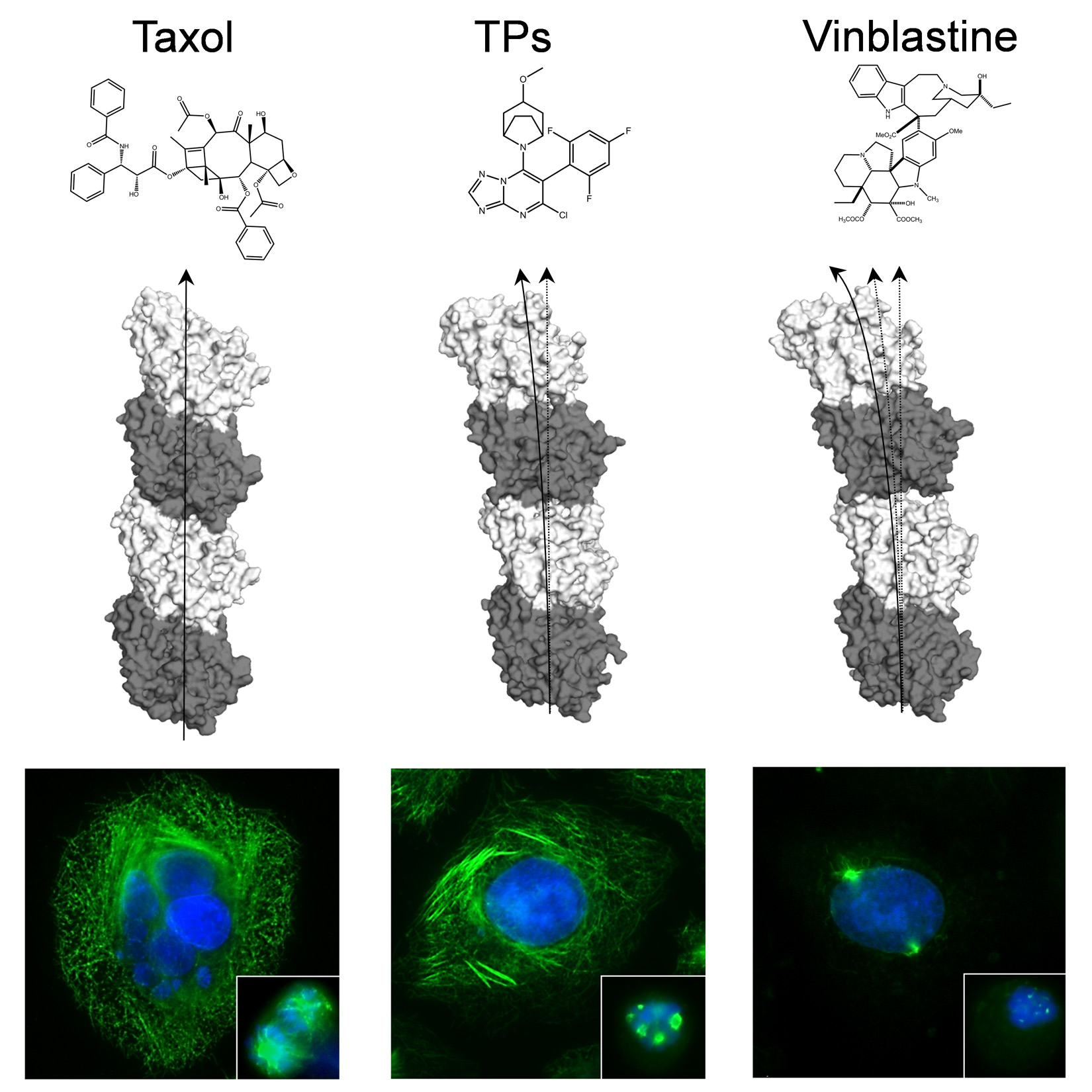
Microtubules take on the separation of chromosomes during cell division, acting as filaments which are extended to trap the chromosomes and decrease afterwards, pulling to separate them. This process, essential for cell proliferation, is deregulated and it is invasive in the case of tumors and any compound which interferes with it has antitumor utility.
For this reason, a great effort has been invested in the last years in the design of antitumor compounds directed to microtubules, highlighting two fundamental types: stabilizing agents of microtubules, which prevent them from shrinking by separating the chromosomes, more effective against solid tumors (breast, ovarian, lung), and destabilizing microtubules, which destroy them by preventing them from binding to chromosomes, and are of choice for non-solid tumors (leukemia). Each of these antitumor agents has a distinct binding site on tubulin.
In this paper, published in Cell Chemical Biology, the group of Dr. Fernando Díaz and Dr. Isabel Barasoain, from CIB, present the discovery of compounds, triazolopyrimidines (TPs), which function as stabilizing agents of microtubules but with the peculiarity that they interact with tubulin at the binding site typical of the classical destabilizer agents such as vinblastine or eribulin.
Using cellular and biochemical assays and obtaining the high resolution X-ray structure of the complex formed between these compounds and their target, the authors demonstrate a new molecular mechanism of action of these compounds, characterized by the stabilization of longitudinal contacts instead of stabilization of the side contacts between subunits of tubulin in microtubules, like in the case of taxanos, the classical stabilizers.
In addition, this study has also found that these compounds appear to be active in tumor cells which are multiresistant to chemotherapy by p-glycoprotein overexpression in in vitro assays. This is one of the most relevant mechanisms of general antitumor resistance in clinical practice and constitutes one of the major problems of chemotherapy. The discovery of new drugs with different mechanisms of action and different physicochemical properties allows having new therapeutic alternatives for resistant tumors.
Reference: Triazolopyrimidines stabilize microtubules by binding to the vinca inhibitor site of tubulin. Gonzalo Sáez-Calvo, Ashwani Sharma, Francisco de Asís Balaguer, Isabel Barasoain, Javier Rodríguez-Salarichs, Natacha Olieric, Hugo Muñoz-Hernández, Manuel Álvaro Berbís, Sebastian Wendeborn, Miguel Angel Peñalva, Ruth Matesanz, Ángeles Canales, Andrea Enrico Prota, Jesús Jiménez-Barbero, José Manuel Andreu, Clemens Lamberth, Michel Olivier Steinmetz y José Fernando Díaz. Cell Chemical Biology. DOI: 10.1016/j.chembiol.2017.05.016
[Image credit: Cell Chemical Biology]
More information:

